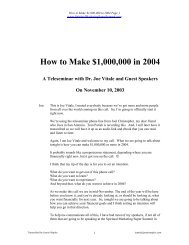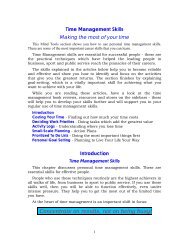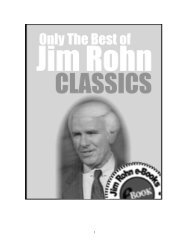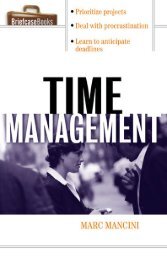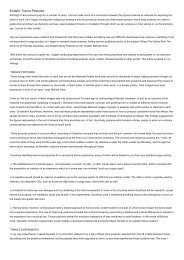Executive Coaching - A Guide For The HR Professional.pdf
Executive Coaching - A Guide For The HR Professional.pdf
Executive Coaching - A Guide For The HR Professional.pdf
Create successful ePaper yourself
Turn your PDF publications into a flip-book with our unique Google optimized e-Paper software.
206 EXECUTIVE COACHING<br />
............................<br />
you accept the ownership and responsibility for making a success of<br />
the coaching effort. <strong>The</strong> coach can only be a catalyst—you have to<br />
make it happen.<br />
This is obvious, but not easy. Why is it difficult? <strong>For</strong> the same<br />
kinds of reasons that diets, good health habits, and New Year’s resolutions<br />
are difficult. Just because it makes sense doesn’t mean we’ll<br />
do things that way. We’re accustomed to putting blame on other<br />
people, procrastinating, expecting others to change first, even being<br />
lazy. Recall the corny old joke that goes “How many people does it<br />
take to change a light bulb? Only one, but the bulb really has to<br />
want to change.” It’s really not so funny when we think about all<br />
the good intentions we’ve had that went nowhere, and not for good<br />
reasons at all.<br />
So what can you do to overcome this tendency? A few hints: Go<br />
public with your planned changes—it makes it harder to backslide.<br />
Enlist the support of others; ask for their active support. Keep a log<br />
or diary of efforts and successes. Reward yourself when things go<br />
according to plan.<br />
<strong>The</strong> Business Relationship<br />
<strong>The</strong> relationship between you and your coach is a business relationship:<br />
you and/or your organization purchases professional services<br />
from the coach to help both you and the sponsoring<br />
organization. <strong>The</strong>re are likely to be both short- and long-term business<br />
benefits.<br />
<strong>The</strong> outcome of the coaching benefits many others beyond the<br />
individual who receives the coaching, including direct reports,<br />
peers, supervisors, and anyone else who may be affected by a<br />
strengthening of leadership in one part of the organization. A ripple<br />
effect of good things can be created when the changes in behavior<br />
of one individual are perceived by others in the organization.<br />
<strong>Executive</strong> <strong>Coaching</strong>. Copyright © 2005 by John Wiley & Sons, Inc. Reproduced by<br />
permission of Pfeiffer, an Imprint of Wiley. www.pfeiffer.com






